Some will know Magda Thomas from her role as ‘top stalker’ in the BBC2 series, Secret Agent Selection: WW2 (still available for viewing via Netflix as Churchill’s Secret Agents: the New Recruits). Regular readers will also have seen Magda’s articles in previous editions of our charity’s newsletter By The Light of the Moon – and other articles on this web site about two of her courageous ancestors in WW2. Continuing with her determination to promote Poland’s often over-looked contributions to Allied victory in the Second World War, Magda now writes:
This year , 2024, we have a special round of anniversaries of significant events that took place during the Second World War, including the 80th anniversary of the D-Day. Another important event worth remembering, especially in the UK, was testing of the German so-called “V weapons” whose main target was Great Britain.
Members of the Polish underground movement helped to discover the location of the construction and testing sites of V weapons and retrieved parts of the V-2 rocket, which were later examined by Polish scientists. Passing on this intelligence to the Allies significantly delayed the use of the weapons against London. If the employment of V weapons had not been delayed then, according to Dwight Eisenhower the Supreme Commander of the Allied Expeditionary Forces, “our invasion [of Normandy] would have proved extremely difficult, if not impossible”.
The V-1, V-2 and later V-3 and V-4 weapons are short for Vergeltungswaffe, or ‘retaliatory weapons’, which were intended to be Hitler’s revenge for the Allied bombing of German cities. The first type of V weapon was the V-1, an unmanned jet aircraft, the so-called flying bomb or ‘doodle bug’, while the V-2 was a ballistic rocket with a much longer range, designed to attack distant targets. These weapons were initially produced in Peenemünde, on the island of Usedom in the Baltic Sea, in the weapons experimental centre led by their constructor Wernher von Braun.
The first report on the production of new weapons was sent from Warsaw to London in the summer of 1942. Initially, the reports reaching Great Britain were downplayed, but over time, when more detailed information was provided by the Polish resistance movement, the British started to see the real threat. After further information was received about German plans to start mass production of these weapons and to use them against England, the decision was made to bomb the facility in Peenemünde.
After the Allied air raid on Peenemünde in August 1943, the tests were moved to the east of Poland, outside the range of the air raids – near the village of Blizna in the Subcarpathian region. There had been an SS training ground in this area since 1940, part of which was now designated as a testing site surrounded by barbed wire and closely guarded. Production of V-2 rockets at that time was moved to the underground Mittelwerk plant – near Nordhausen in Thuringia in central Germany. The factory was located in underground rooms carved into Mount Kohnstein, where tens of thousands of prisoners from the nearby Dora concentration camp worked in terrible conditions.
The first test rocket from the Blizna training ground was launched at the turn of October/November 1943. Most of the rockets exploded in the air, the rest fell near the training ground. From April 1944, long-range tests began, including towards a location 270 km away in Podlasie – near Sarnaki and the Bug River. In total, about 100 rockets were fired towards Sarnaki. Several explosion craters still exist today in the area. In total, about 50 locations have been documented where rockets or their fragments fell.
The Germans who were stationed in Sarnaki were informed by radio about each rocket launch from Blizna and their task was to reach the site of the subsequent explosion as quickly as possible. The partisans and local residents tried to collect the remains of the rockets before the arrival of the Germans.
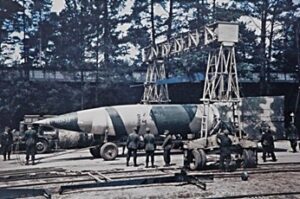

V-2s being tested.
One of the most significant events which allowed the Allies to learn about the V-2 rocket was the interception of an unexploded V-2 ballistic rocket by the Polish Home Army. On 20th May 1944, one of the rockets fell on the banks of the Bug River and did not explode. The Germans failed to find it, but it was quickly located by the Polish resistance movement and masked so that it could not be seen, even from the air. After a few days, the rocket was recovered by soldiers of the 8th company of the 22nd Home Army Infantry Regiment of the “Siedlce” district and transported to a barn in the nearby village of Hołowczyce. The unexploded bomb was dismantled there and examined by engineers from Warsaw.
During the operation of transporting and dismantling the rocket, in the surrounding forests near the village of Mierzwice, the “Zenon” Partisan Unit of the 34th Home Army Infantry Regiment carried out activities to distract the Germans. As a result of these actions, several firefights occurred, which cost some partisans their lives. Due to the need to maintain secrecy, the partisans did not know that they were participating in a cover operation for retrieving and dismantling the V-2 rocket.
Fragments of the rocket were transported to Warsaw, where they were tested in the secret laboratories of the Home Army. The most important parts of the rocket were documented with diagrams, photographs and a chemical analysis of the propellant, prepared by a team of engineers and scientists in Warsaw. These were then transported from Poland to England via Italy as part of the WILDHORN III [also known in Poland as Operation MOST III] air operation. [Editor’s note: an epic clandestine operation flown by Flight Lieutenant S. G. Culliford in KG477, a C-47 (Dakota) of 267 Squadron, RAF from Brindisi in southern Italy.]
To this day, several craters from V-2 explosions have been preserved near Sarnaki – the largest one is in the Lipowiec forest near the village of Kózki. It is located in a place where an expressway is currently being built, but local historians are making sure (see signs below) that this testimony of events from 80 years ago is preserved for future generations.
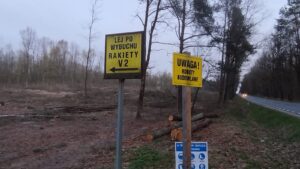
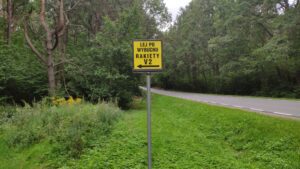
In Sarnaki, there is a monument in honour of people who took part in this challenging operation. The inscription on the monument reads: “They saved London”. The military attaché of the British Embassy was present at the unveiling of the monument in 1995 and publicly thanked the Poles for discovering the construction and functioning of V-2 rockets.


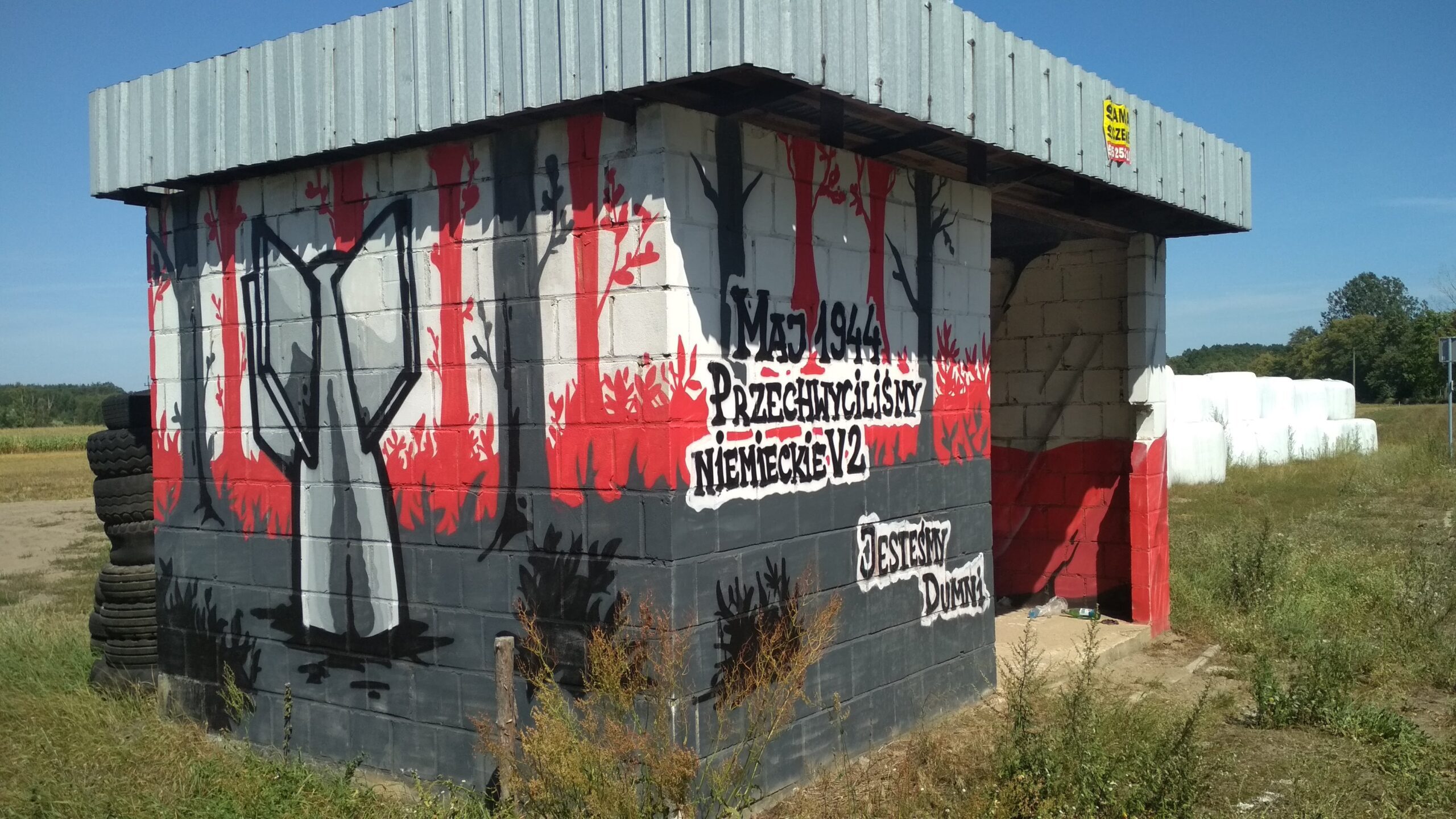
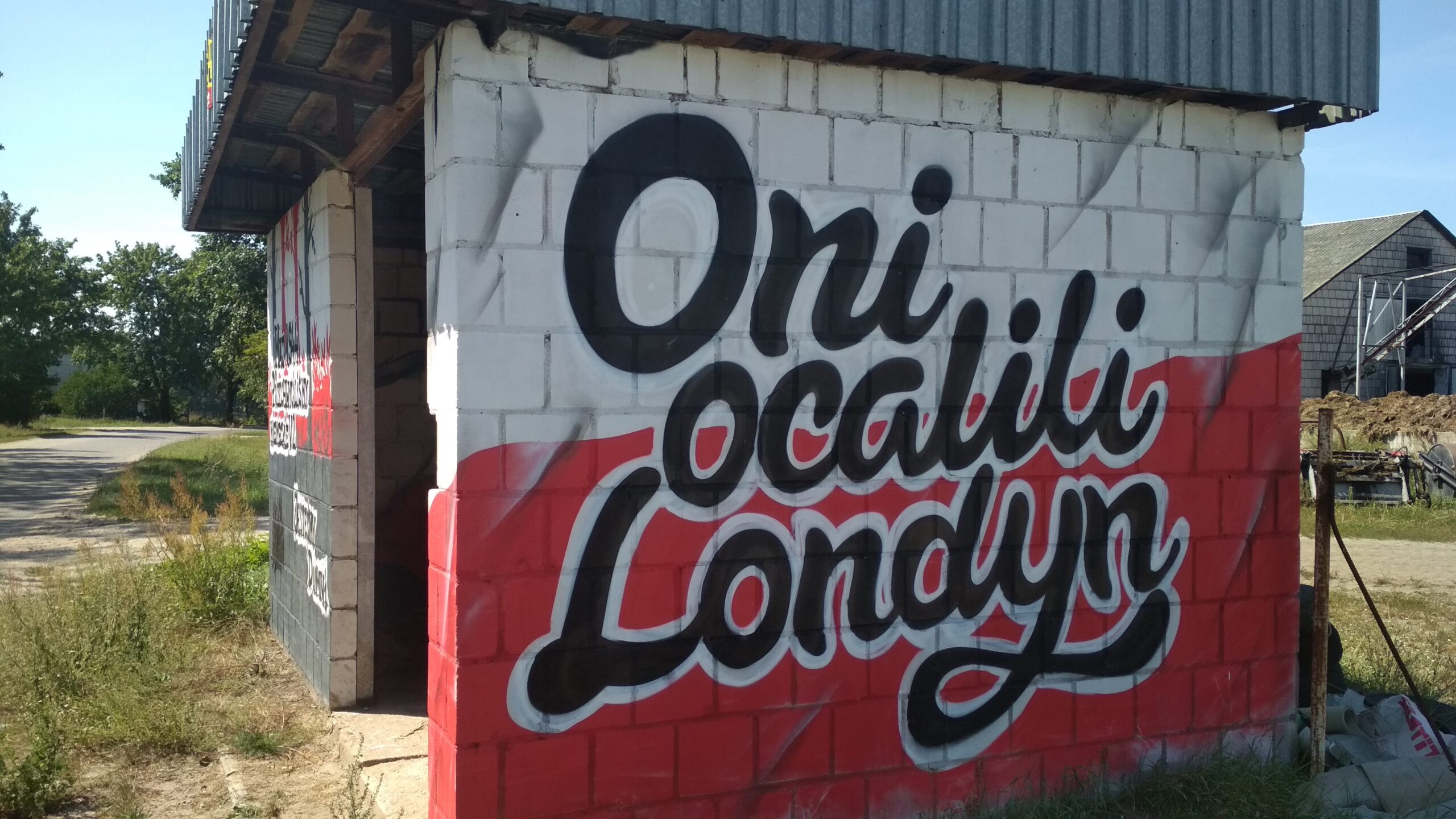
Above – the V-2 Monument in Sarnaki and a bus shelter near Sarnaki – ‘They Saved London’.
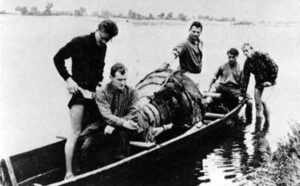
Divers from Warsaw recovered part of a V-2 rocket engine in 1956.
The school in Sarnaki is named after the V2 Action Heroes and work is currently underway on the V-2 Museum project, which is to be located in the old part of the school building. Some of the exhibits are to be borrowed from the Mieczysław Asłanowicz’s Regional Museum in Siedlce which, in addition to rocket parts and technical documentation, also includes household items made from fragments found by residents after the V-2 explosions.
This year an English translation of Sławomir Kordaczuk’s book “Testing of V-1 flying bombs and V-2 ballistic rockets in eastern Poland in 1944” will be published, where the author describes the results of his many years of research and interviews with eyewitnesses to these events.
It is impossible to list all the people who contributed to the fight against the V weapons. The V weapon programme turned out to be not as effective as Hitler expected, but could have caused far greater damage to the British Isles if it had not been for the involvement of the Poles. This story is better known in Poland than in Great Britain, which makes it even more important to reach English-speaking audiences and Kordaczuk’s book will help to remind more people of these events from 80 years ago. On the evening of 4th September 2024, Paul McCue and I will be making a presentation on the history of combating V weapons in Poland and France by the Polish resistance. This will be held at Ognisko Polskie, the Polish Hearth Club, in London on 4th September 2024 and will include the launching of Sławomir Kordaczuk’s book. I hope to see some of you there, further information, including the time and booking details, will appear at a later date on Ognisko Polskie’s web site, here.
Magda Thomas.